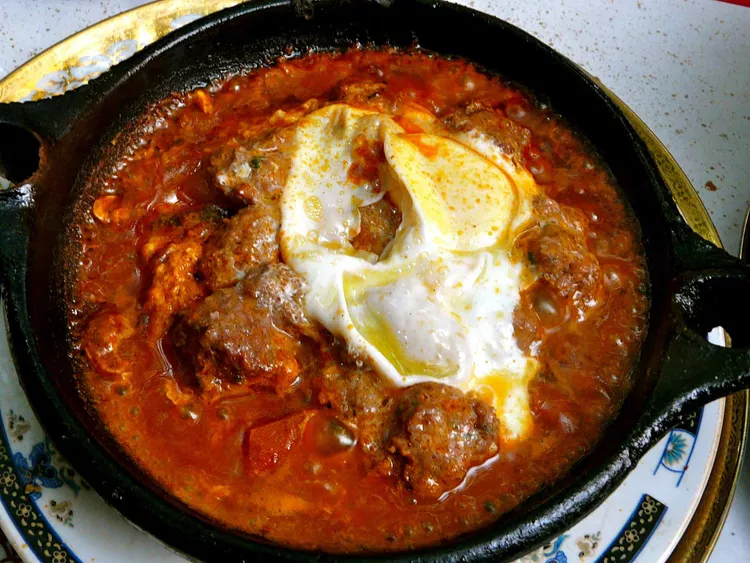Morocco is renowned globally for many attractions, including the vibrant souks of Marrakesh, the charming blue-washed streets of Chefchaouen, and the picturesque snow-covered slopes of Oukaïmeden. However, one of its most celebrated aspects is its exquisite cuisine, characterized by the liberal use of locally sourced spices like saffron and cinnamon, offering distinctive flavors to various dishes. Coastal areas such as Essaouira and Asilah brim with fresh seafood, while the bustling bazaars in the country’s imperial cities provide a haven for street food aficionados. Consequently, this article highlights five must-try dishes, perfectly complemented by the national beverage – mint tea.
Tagine
Tagine is the quintessential Moroccan dish, and it is impossible not to encounter it when visiting. This stew, originating from the Berber culture of North Africa, gets its name from the unique clay pot, called tajine, in which it is cooked. The tajine features a wide base and a cone-shaped lid that effectively traps steam, maintaining moisture with minimal water – a significant advantage in arid climates.
Typically, ingredients consist of meat and vegetables, prepared slowly over low heat to enhance tenderness and flavor. Key spices like cinnamon, turmeric, ginger, cumin, and saffron create a rich taste. Various offerings include chicken, vegetable, and kefta tagine, the latter featuring spiced meatballs topped with a fried egg. For a sumptuous experience, opt for lamb tagine combined with almonds, prunes, or figs, with many establishments also providing vegetarian alternatives.
Couscous

Couscous stands out as a staple in North African diets due to its convenience and versatility. These small steamed semolina balls, derived from the Berber word Keskes, can be used in various dishes, from savory stews to sweet desserts. Traditional cooking methods involve steaming couscous above a metal pot containing a hearty stew, allowing the flavors to infuse.
In Morocco, couscous is often paired with meat and/or vegetable stews and may also be served as a dessert called seffa, featuring almonds, sugar, and cinnamon with a fragrant milk infused with orange flower essence. Both varieties are delightful and satisfying.
Bastilla

Bastilla is a savory pie that merges Arabic and Andalusian culinary traditions. Its name originates from the Arabic term for “small pastry,” pastilla. While no longer common in Spain, this dish represents a historical connection between Spain and Morocco during Moorish rule, when cultures mingled freely. Bastilla consists of layers of werqa dough, which is akin to phyllo pastry, filled with a mixture of meat, onions, herbs, and spices, all bound with beaten eggs.
Upon baking, a dusting of icing sugar and cinnamon, along with ground almonds, adorns the top. Traditionally featuring squab, today’s versions often use chicken, beef, fish, or offal, making it a popular dish for various occasions.
Zaalouk

Zaalouk is a beloved Moroccan eggplant dish, often enjoyed as a dip or salad. The main ingredients include cooked eggplant, tomatoes, garlic, olive oil, and coriander, accented with paprika and cumin for a smoky flavor. It pairs beautifully with traditional Moroccan flatbread, enhancing any meal while showcasing regional variations in recipe preparation.
Harira

Harira, a traditional Berber soup, derives its name from the Arabic word harir, meaning “silky.” This dish is widely enjoyed across the Maghreb region and is commonly served at sunset to break the fast during Ramadan. Travelers can find it as a starter or light meal in many Moroccan restaurants. Each region offers its unique take on harira, but core ingredients include tomatoes, lentils, chickpeas, and spices, often complemented by a small portion of meat and garnished with lemon juice and turmeric for added zest.





